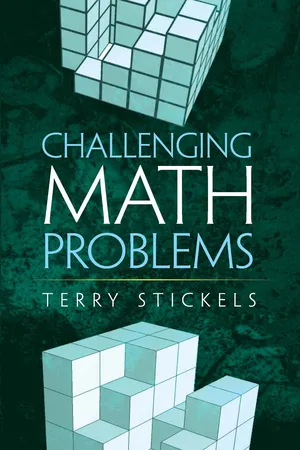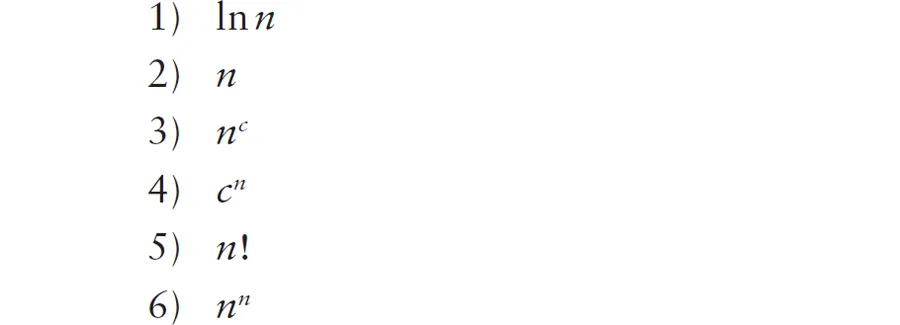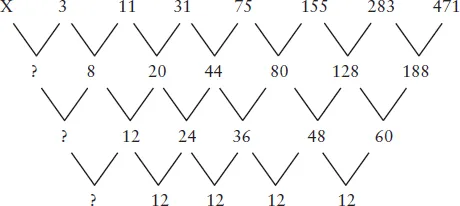
- 112 pages
- English
- ePUB (mobile friendly)
- Available on iOS & Android
Challenging Math Problems
About this book
"Fun and highly formidable math problems and puzzles from noted puzzle creator Terry Stickels." — Window on Resources
Two friends wish to meet for breakfast twice a month throughout the year. In how many ways can they choose those two days so that they never meet on consecutive days?
You want to measure 30 seconds and you have two pieces of string, each of which burns for 40 seconds. How can you accomplish this without bending, folding, or cutting the strings?
A positive whole number is divisible by 3 and also by 5. When the number is divided by 7, the remainder is 5. What is the smallest number that could work?
These are but a few of this book's assembly of the most challenging puzzles imaginable ― and they require no background in higher math, just good thinking skills. Terry Stickels, a well-known puzzle-maker, has compiled 101 of some of the best and most entertaining problems ever published. All of the challenges, which range from probability puzzles to dice games, have two things in common: each offers the "Aha!" moment of discovery that puzzle-solvers love, and they're all fun. Complete solutions for all puzzles explain every detail.
Frequently asked questions
- Essential is ideal for learners and professionals who enjoy exploring a wide range of subjects. Access the Essential Library with 800,000+ trusted titles and best-sellers across business, personal growth, and the humanities. Includes unlimited reading time and Standard Read Aloud voice.
- Complete: Perfect for advanced learners and researchers needing full, unrestricted access. Unlock 1.4M+ books across hundreds of subjects, including academic and specialized titles. The Complete Plan also includes advanced features like Premium Read Aloud and Research Assistant.
Please note we cannot support devices running on iOS 13 and Android 7 or earlier. Learn more about using the app.
Information
Let | n | = Number of benches needed when seating eight per bench |
m | = Number of benches needed when seating nine per bench | |
s | = Number of students |



Table of contents
- Cover
- Title page
- Copyright
- Introduction
- Acknowledgments
- Puzzles
- Solutions
- Afterword